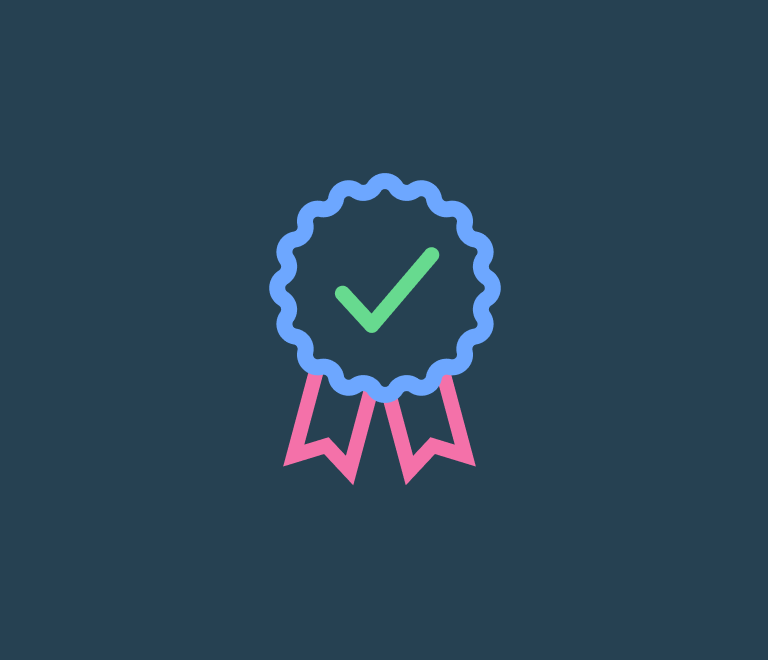Project Quality Management: Essence, History, and Key Tools
Phases of Project Life Cycle: 5 Key Phases Explained
The project life cycle is a crucial concept in project management, encompassing the series of phases that a project goes through from its inception to its completion. Each phase in the life cycle serves a specific purpose and includes distinct activities and deliverables that contribute to the project's overall success.
This article provides an in-depth exploration of the project life cycle, detailing each phase's key activities, deliverables, tools, techniques, roles, and responsibilities in different methodologies.
What is a Project Life Cycle?
The classical (PMI) approach to the project life cycle is the most popular and effective in project management. It combines traditional methods with flexible planning techniques under the rolling wave method.
The typical phases of a PMI project life cycle diagram are:
- Initiation
- Planning
- Execution
- Monitoring and Controlling
- Closure
The concept of the project life cycle is perfectly represented by the Python Principle that we explored earlier in our articles. This principle visualizes a project as a python with a tail that stands for the initiation phase, then there is a heap with a prey inside that represents such stages as planning, execution and monitoring all circulating in the Deming cycle, and, finally, a head that stands for the project closure.
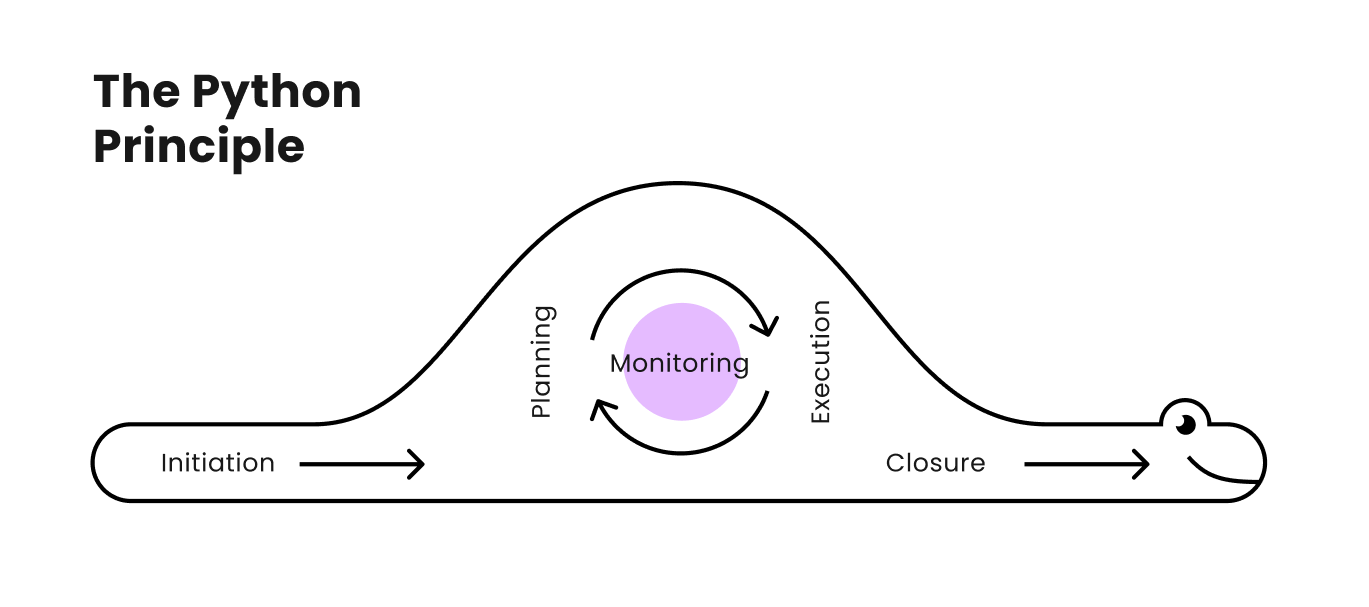
Let’s delve deeper and explore each phase of this approach in more detail:
1. Initiation
Project initiation is the first phase of the project life cycle where you decide whether to launch the project or not, and, if you do, that’s where we prepare the project to start. During the initiation phase, we determine the viability of the project. This involves assessing whether we have the necessary competencies, resources, and time according to the project management triangle.

This stage is characterized by the close communication with the sponsor to decide whether to proceed with the project, negotiating the project time and resources.
Once the project is set to be launched. There are two very important outcomes that finalize this stage:
- Project Charter. This document formally authorizes the project, grants the project manager authority, and aligns the sponsor and the project manager on expectations and commitments. The charter is developed according to the Egg Principle, where we establish the project's boundaries (the shell) that must not be exceeded. Learn more about a project charter here.
- Stakeholder Register. After identifying all parties affected by the project, including customers, team members, and other stakeholders and understanding their needs, expectations, and influence on the project, we come up with the stakeholder register.
2. Planning
The project planning phase is where plans and schedules are developed to guide the project team in executing the project effectively. During the planning phase, we create initial plans, but this does not mean we detail every aspect of the project. This is impossible because projects, by definition, deal with tasks whose detailed planning is not feasible. We draft an initial version of the plan, which always remains within the framework of the project charter.
The planning phase includes:
- Scope Definition. Before the team starts working, we refine the scope outlined in the charter. There are three steps to scope management: gathering requirements from the stakeholders into a requirement matrix, creating a comprehensive scope statement, and building a Work Breakdown Structure (WBS).
- Network Diagram. We take the lowest level elements of the WBS and place them in a network diagram to understand the sequence of actions. We start with the most immediate tasks and, using the rolling wave planning method, detail the upcoming tasks.
- Resource Allocation. After clarifying who will work on the project, we add resources to the plan.
- Duration Estimation. We estimate the duration of tasks and compile a schedule. If we do not fit into the schedule, we employ schedule compression techniques.
- Project Schedule. Develop a project schedule that outlines the start and end dates for all project activities. Such techniques as Critical Path Method (CPM) and Gantt charts can be used to visualize the project timeline.
- Cost Estimation. Finally, we estimate the financial resources required for the project. Develop a project budget that outlines the cost baseline and funding requirements.
Besides the primary plans, we also develop plans for risks, procurement, quality management, and communications.
- Risk Management Plan. Identification of potential risks that could impact the project. The risk management process includes: Identifying risks; Qualitative risk assessment (aimed at reducing the risk list); Quantitative risk assessment; Mitigation strategies, and contingency plans.
- Procurement Management Plan. Identifying the goods and services required from external vendors. Developing a procurement management plan to outline procurement processes, contracts, and vendor management strategies.
- Quality Management Plan. Defining the project's quality standards and criteria. Establishing processes and metrics for ensuring that project deliverables meet the required quality standards.
- Communications and HR Management Plans. Developing a communication plan that outlines how information will be disseminated to stakeholders. Defining communication channels, frequency, and formats to ensure effective information flow.
The main deliverable of the planning phase is the project management plan that integrates and consolidates all subsidiary plans and baselines. Include plans for scope, schedule, cost, quality, resource, communication, risk, procurement, and stakeholder management in this final document to make sure that all team members and stakeholders have a clear understanding of how the project will be carried out.
3. Execution
Once our initial plans are drafted, we hold a kickoff meeting to ensure everyone understands the plans. The project begins, and our plans are repeatedly refined and corrected, except for the charter.
As a project manager, your role during execution includes removing obstacles, facilitating efficient work, organizing effective communication, ensuring everyone receives necessary information, managing stakeholder expectations, motivating the team, and handling conflicts.
4. Monitoring and Controlling
During execution, changes accumulate, leading to plan, schedule, and risk adjustments. This phase ensures that the project remains on track and within scope. It involves tracking, reviewing, and regulating the progress and performance of a project and identifying any areas where changes to the plan are required.
Key performance indicators (KPIs) and project milestones are used to measure progress. Regular status meetings and reports help identify any issues early, allowing for timely corrective actions. This phase aligns closely with the Deming Cycle (Plan-Do-Check-Act), emphasizing the importance of continuous improvement through regular reviews and adjustments.
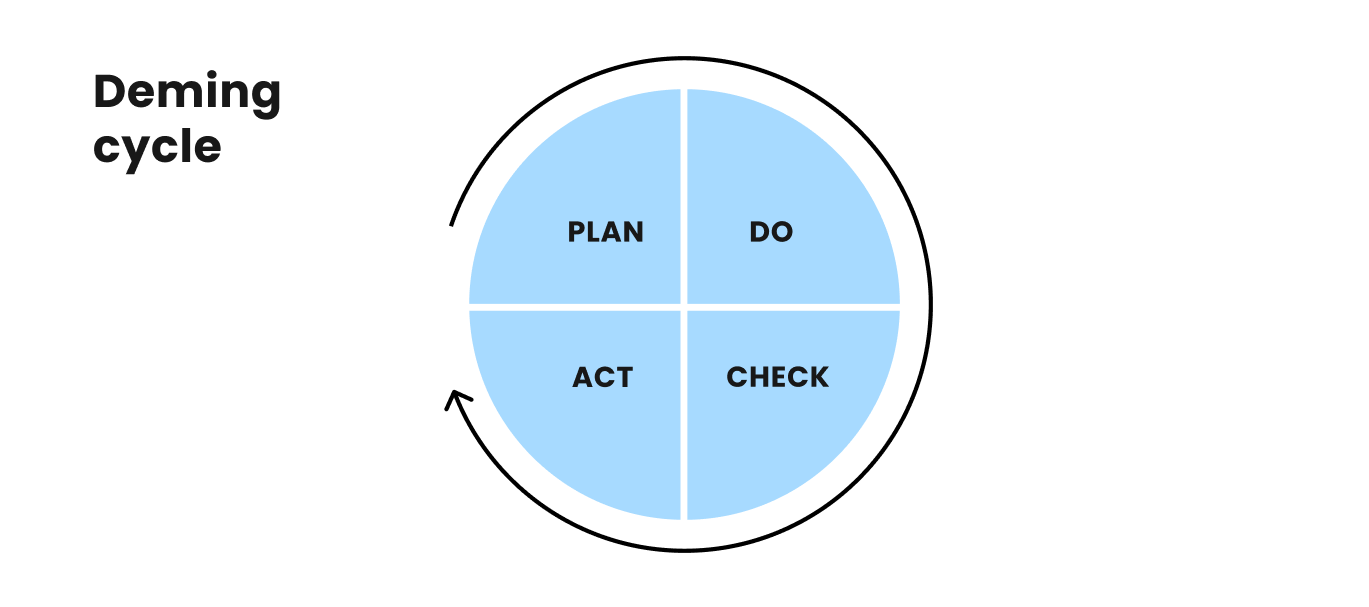
Continuous improvement is a fundamental aspect of project management. The need to renew or update the project plan should be based on the following key deliverables of this stage:
- Performance Reports. It provides a detailed analysis of project performance data, including Earned Value Management (EVM) reports, trend analysis, and forecasts to track progress against the project plan.
- Risk Register Updates. Maintaining and updating records of identified risks, their responses, and current status, enabling proactive risk management and mitigation.
- Quality Control Reports. Documenting the results of inspections, tests, and audits, ensuring that project deliverables meet predefined quality standards and identifying areas for improvement.
- Stakeholder Feedback. Regularly engaging with stakeholders can provide insights into their evolving needs and expectations, prompting adjustments to the plan.
- Project Milestones Updates. Meeting or failing to meet project milestones can indicate whether the project is on track or needs adjustments.
5. Closure
The project concludes with closure, where you ensure the promised outcomes are achieved within the defined limits and are evaluated based on the project management triangle (scope, time, and cost). This phase ensures that the project deliverables meet the desired quality standards and that all contractual obligations are fulfilled.
The Final Project Report becomes the key deliverable of the closure stage. It encapsulates the entirety of the project's life cycle, serving as a definitive record of its execution and outcomes. This report includes a detailed summary of the project's objectives, scope, timeline, and key deliverables, offering a clear comparison between planned and actual performance. It highlights the successes and achievements, showcasing how the project met or exceeded stakeholder expectations.
By providing an in-depth analysis and reflection on the project, the Final Project Report not only marks the formal closure of the project but also acts as a valuable resource for future projects, enabling continuous improvement and organizational learning.
Project Life Cycle in Other Methodologies
1. The Predictive (Waterfall) Project Lifecycle
In project management, the Waterfall approach involves meticulously planning every phase of a project and following this plan strictly, with minimal room for changes once development begins.
Coined by Winston Royce, the term "Waterfall" was introduced to software development, highlighting a linear progression from one phase to the next. Royce himself criticized its effectiveness in many cases, advocating for more flexible and rational approaches. For example, he suggested principles like "Do it twice" and "Involve customers," arguing against rigid planning due to its high risk and unpredictability.
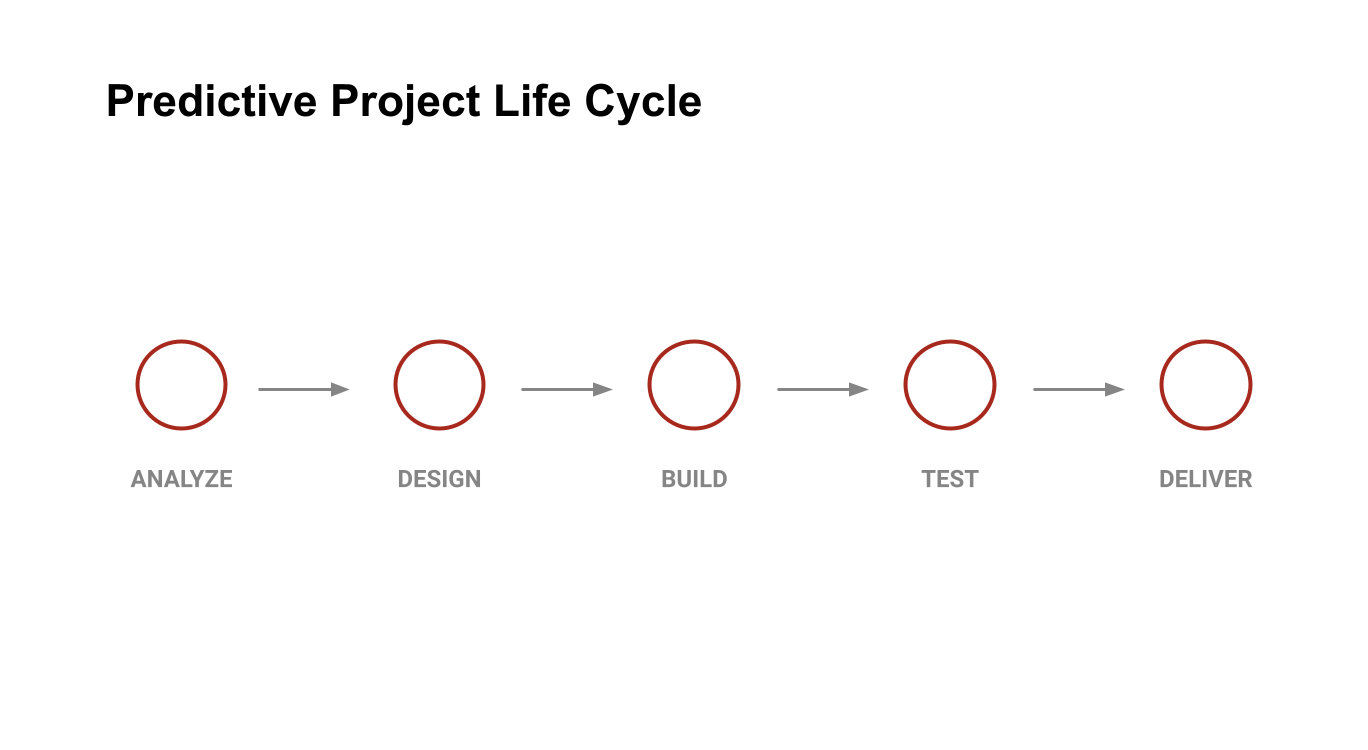
The Waterfall approach, characterized by its sequential and inflexible nature, is rarely encountered even in less adaptive sectors. Its reliance on detailed upfront planning often leads to inefficiencies and failure to adapt to evolving project needs and technological advancements. This model assumes that requirements can be fully understood and defined at the outset, which is often unrealistic in complex projects.
2. Iterative and Incremental Approaches
Contrasting with Waterfall is the iterative and incremental approach, particularly prominent in IT. Iteration involves repeating cycles of development, while increment refers to the addition of new functionality in each cycle. This approach, exemplified by methodologies like Scrum, emphasizes delivering workable increments of a product. For instance, a mobile application might initially support taxi bookings and later incorporate features like credit card payments.
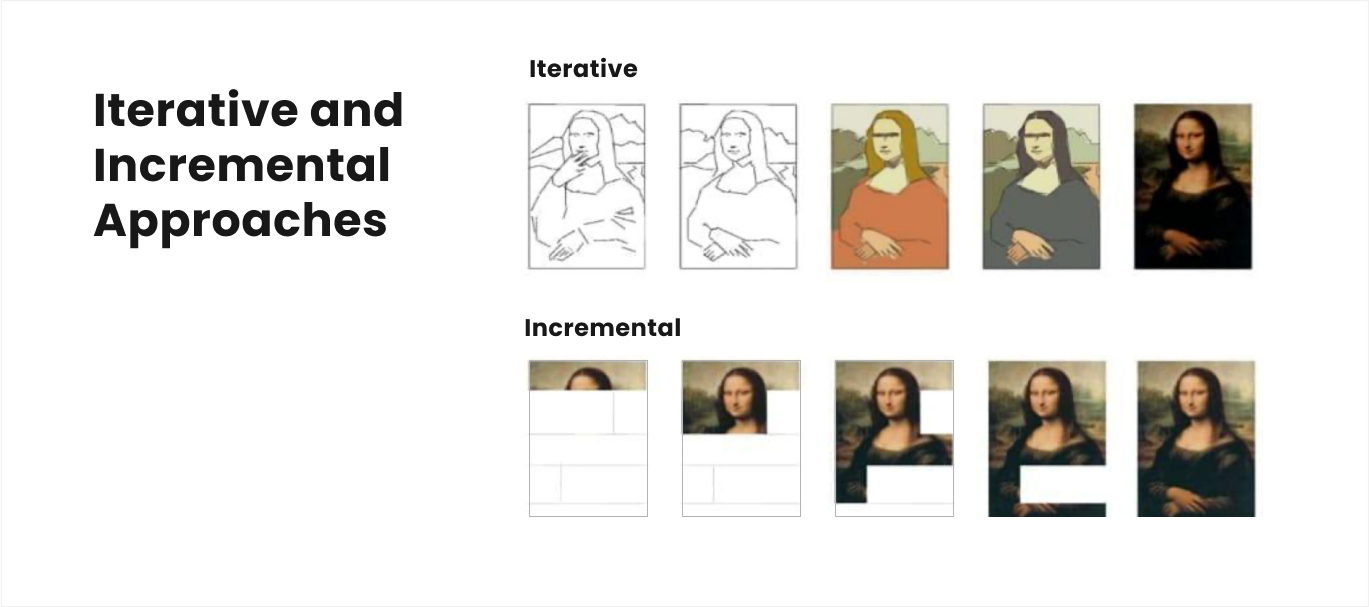
In iterative development, teams work in short bursts (iterations), typically a few weeks long, focusing on delivering usable features or improvements. Each iteration concludes with a review and planning session, ensuring continuous improvement and alignment with project goals. Daily meetings (daily stand-ups) keep teams synchronized, addressing issues promptly and adjusting plans as necessary. This ongoing cycle allows for flexibility in responding to feedback and changing requirements, unlike the rigid structure of Waterfall.
While the Waterfall approach persists in certain industries where predictability and stability are paramount, its limitations have spurred the widespread adoption of iterative and incremental methods across various sectors.
However, the iterative approach only serves perfectly for product management where we do not care about such a restriction as deadlines rather than project management. When dealing with managing a project, timing and therefore budgeting also, mean a lot. That’s why the classical PMI approach may provide a more effective solution.
Conclusion
Understanding and effectively managing the project life cycle is fundamental to the success of any project. The project life cycle provides a structured framework that guides project managers and teams through the essential phases of a project, from initiation to closing. By breaking down the project into distinct phases, it becomes easier to plan, execute, monitor, and close projects systematically and efficiently. This structured approach helps ensure that projects are completed on time, within budget, and meet the desired quality standards.
About the Author
Violetta Chernobuk is a skilled content strategist and writer at Planyway, specializing in crafting insightful and engaging articles on productivity and project management. With her keen eye for detail and a deep understanding of user needs, Violetta ensures that every piece of content is both informative and inspiring, helping readers optimize their workflows and stay ahead in their projects.
